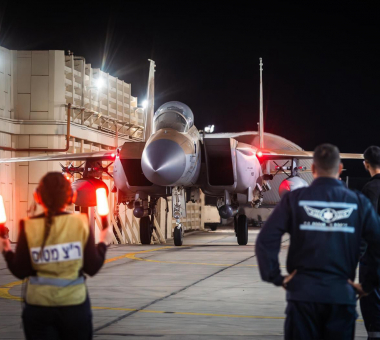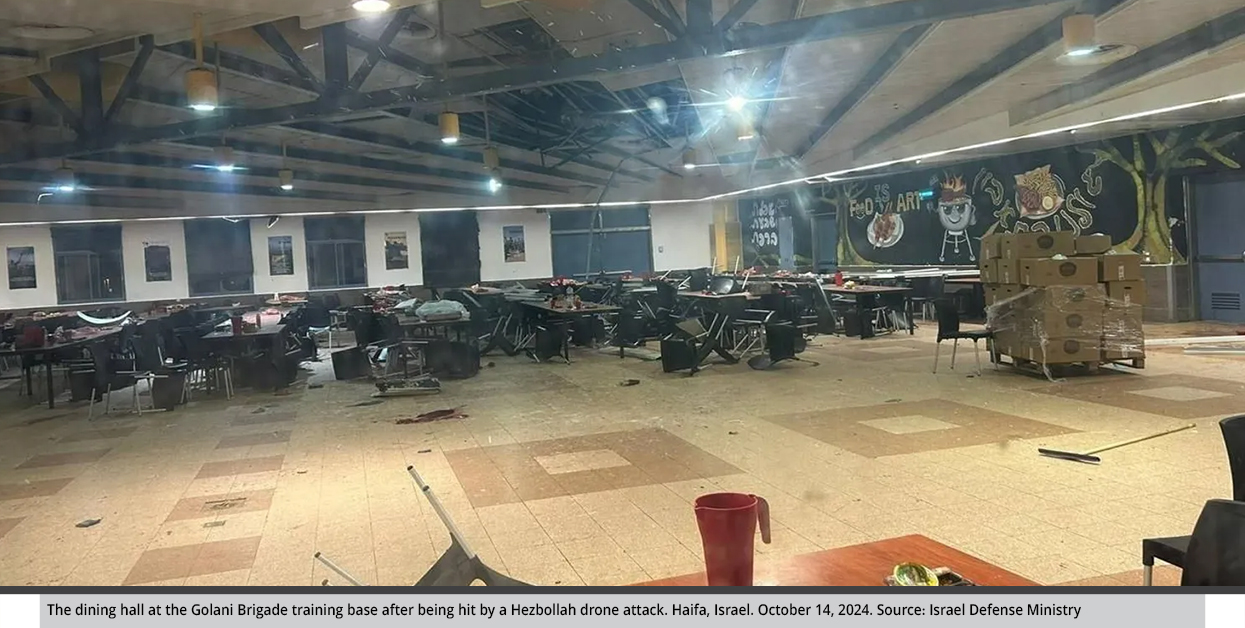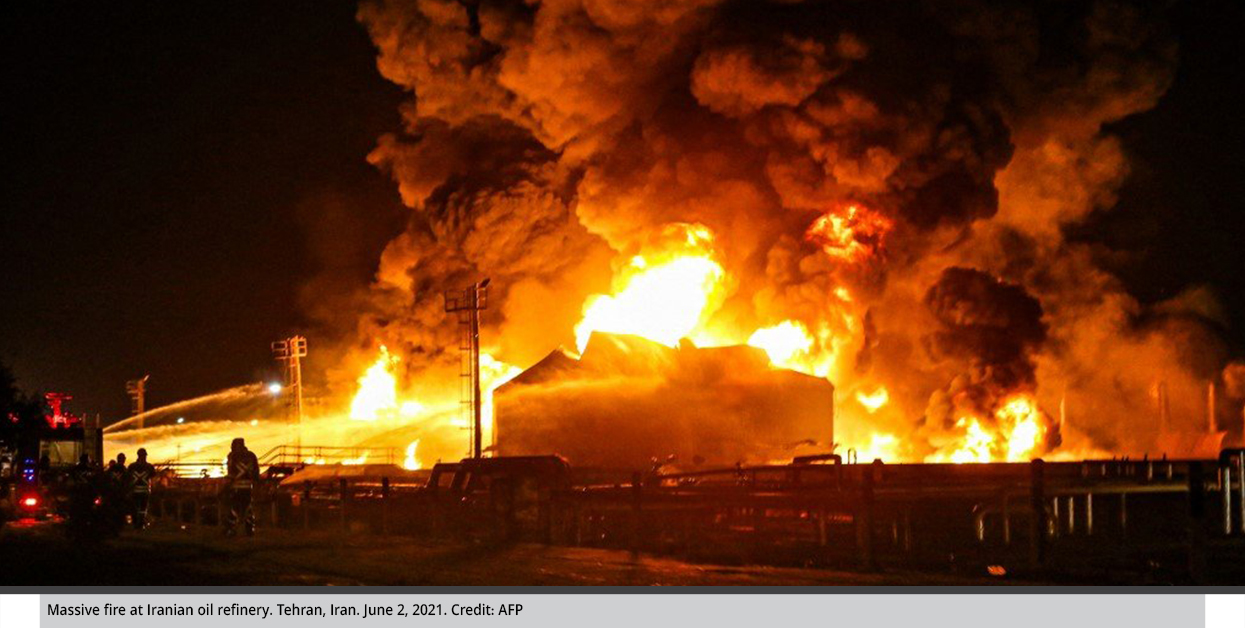Scenarios for Israel’s Anticipated Strike on Iran
The world today is preoccupied with the anticipated Israeli response to recent Iranian attacks, which is expected to be disproportionate and comes with unexpected repercussions, especially after Israel put its response in the frame of strategic objectives.
by STRATEGIECS Team
- Release Date – Oct 16, 2024

The world is anticipating an imminent Israeli strike against Iran in response to the Iranian strike of more than 180 ballistic missiles on October 1. The attack targeted Mossad headquarters and military bases and location, as well as causing damage to Israel’s Nevatim Airbase. With Defense Minister Yoav Gallant declaration that Israel’s response will be “powerful, precise, and, above all, surprising,” the region is on the brink of a major escalation since the response is expected to be both unexpected and disproportionate.
There are several options regarding this response but it revolves around two main scenarios. The first focuses on achieving Israel’s strategic objectives in the conflict, particularly targeting elements of the “Axis of Resistance” and the foundations of the “unity of arenas” strategy. The second involves Israel seizing the moment to launch a critical strike against Iran’s political and military leadership or major projects such as its nuclear program.
First Scenario: Strikes Aligned with the Current War Objectives
Undermining the unity of arenas strategy, dismantling the Axis of Resistance, and weakening its components are clear Israeli objectives in the current war. This objective has shifted from the Gaza Strip towards Lebanon and is likely to expand to include other components of the axis in Syria, Yemen, and Iraq. Achieving this complex objective requires targeting elements connected to these factions in Iran to undermine Tehran’s ability to conduct proxy warfare and restrict its influence within its borders.
In this scenario, Israel does not aim merely to separate proxies from the central command but to strike the source that supplies these proxies with leaders, weapons, and equipment. Accordingly, potential future strikes are likely to target three key locations inside Iran: those related to the central command system for the proxies, the military-industrial complex, or the Iranian naval system.
- Central Command
It is likely that strikes will concentrate on the leadership, units, and positions of the Quds Force, aiming to complement previous attacks on the force in both Syria and Lebanon since the war began. In Syria, 27 commanders of the Islamic Revolutionary Guard Corps (IRGC) have been killed during the first year of the war, including 14 high-ranking leaders. These included key figures in Quds Force operations, aerospace, communications, logistics, and intelligence.
Targeting the Quds Force leadership chain and affiliated sites inside and outside Iran aligns with the stated war objectives. Such strikes weaken Iran’s ability to continue supporting its proxies and engaging in proxy warfare, while also impairing the proxies’ ability to reorganize. Notably, the Quds Force is currently attempting to fill the leadership vacuum within Hezbollah by inserting its own commanders.
Despite the Quds Force’s relatively independent structure from the IRGC, Israeli strikes against it are intended to target Iran’s external military assets rather than internal ones. Furthermore, the secrecy surrounding the Quds Force—whether at the level of its units, headquarters, or leadership within Iran—appears compromised. Israel has managed to penetrate these layers through a series of operations targeting Quds Force leaders in Syria and Lebanon. This breach may now extend into Iranian territory following the assassination of Ismail Haniyeh, the head of Hamas’s political bureau, in Tehran on May 31, 2024.
- Military and Defense Supplies
It is likely that future Israeli strikes will focus on Iran’s military and defense industries that play a critical role in supplying drones and ballistic missiles to its proxies. These weapons represent a significant threat to Israel, especially those that have demonstrated the ability to bypass Israel’s advanced radar systems and penetrate its air defense networks. Examples, among many others, include a long-range Iranian-made suicide drone the Houthis launched on July 19 that killed one man and wounded four others in Tel Aviv; a Houthi-launched ballistic missile launched against Ben Gurion Airport on September 28 to coincide with Israeli Prime Minister Benjamin Netanyahu’s arrival in Israel; a drone launched by Iraqi factions that killed two Israeli soldiers on October 4; and a Hezbollah-launched drone targeted against an Israeli military base in the Golan Heights that killed at least four Israeli soldiers on October 14.
These targets align with military objectives intended to match the scale of Iranian aggression. Disrupting Iran’s ability to supply its proxies with combat systems would significantly curb their operational capabilities. Israel acknowledges the challenge of intercepting drones compared to missiles, as fighter jets are often required to neutralize them. Iran’s drone manufacturing has already been a focus of covert operations attributed to Israel. A notable example is the January 2023 attack on a defense industrial complex in Isfahan, which is believed to have targeted a drone production facility.

- Targeting the Iranian Navy
Targeting the Islamic Republic of Iran Navy is another strategic option, given its pivotal role in regional activities and supplying weapons to Iran’s proxies. After Israeli airstrikes on Syria’s airports in Homs and Damascus during the first month of the war disrupted Iran’s ability to reinforce its arsenal in Syria by air, Tehran resorted to maritime routes. According to an investigation published March 2024 in Britain’s The Telegraph newspaper, weapons shipments were redirected through the Bandar Abbas Port in Iran to Syria’s Latakia Port, a distance of 3,427 nautical miles.
However, strikes on the Iranian navy would primarily aim to undermine the capabilities of the Houthis in Yemen. Compared to Hamas and Hezbollah, the Houthis have sustained fewer losses since the beginning of the war and have demonstrated effectiveness in both naval and aerial operations. As a result, the Israeli military has threatened the Houthis with a large-scale offensive.
Iran’s naval activities form a critical component of the Houthis’ strength, as they benefit from military, intelligence, and logistical support provided by Tehran. Weakening the Iranian navy would therefore hinder the operational and informational capabilities of the Houthis, complicating their ability to receive missiles and drones.
Second Scenario: Decisive Strikes Against Vital Targets in Iran
Israel redefined its objectives in the ongoing war following a series of strikes targeting Hezbollah leaders and assets in Lebanon. The assassination of Secretary-General Hassan Nasrallah was labeled “Operation New Order” after Netanyahu’s stated that Israel aims to bring about a strategic shift in the Middle East. The options being considered by Israeli officials for the anticipated strike against Iran align with this broader strategic goal. These options include targeting vital areas and facilities, economic infrastructure, nuclear installations, and key political and military command centers.
- Nuclear Facilities
Striking Iran’s nuclear facilities has been a core Israeli objective for decades, driven by its opposition to the 2015 nuclear agreement between Iran and five permanent UN member nations, Germany and the European Union. Israel has consistently employed covert and intelligence operations to hinder the development of Iran’s nuclear program. Following Iran’s recent attacks, several Israeli officials linked Israel’s response to the necessity of targeting these nuclear sites, whether through destructive missile and air strikes or a large-scale cyberattack.
Iran’s nuclear program has remained in Israel’s crosshairs before and during the current conflict. Israel has been implicated in multiple attacks on Iranian scientists and facilities, including the assassination of Iran’s top nuclear scientist, Mohsen Fakhrizadeh, in November 2020 and the April 2021 sabotage of the Natanz nuclear facility, which caused significant damage to its electrical distribution grid. More recently, though vehemently denied by both Israel and Iran, the Israeli news site Maariv published low-quality satellite images showing damage to Israel’s Dimona nuclear facility after a purported Iranian attack in April 2024. Additionally, in late April, a missile launched from Syria landed near the Dimona reactor, highlighting the persistent threats facing the facility.
Meanwhile, any direct strike on Iran’s nuclear infrastructure requires not only a green light from the United States but also active American involvement. This would entail the use of U.S. aerial refueling planes, bunker-buster bombs, and comprehensive protection for the Dimona reactor against potential Iranian retaliation. Ironically, without U.S. backing, the risks in striking an Iranian nuclear facility all but guarantee consequences that would far outweigh any strategic gains. U.S. President Joe Biden underscored this point on October 2 when asked if he would support Israel attacking Iranian nuclear sites: “No, I will not,” he responded firmly.
Nevertheless, Israel may opt for alternative military actions, such as targeting nuclear research centers or air defense systems protecting critical nuclear infrastructure. A precedent for such an approach was seen in April, when Israel targeted an air defense battery that was part of the protective network around the Natanz facility.
- Economic Capabilities and Vital Resources
Israel’s threats to target oil refineries face significant opposition from the United States. This resistance primarily stems from concerns about the potential “oil shock” that could result, leading to disturbances in markets and prices that would affect the U.S. market. The timing is critical, especially with early voting for the U.S. presidential elections having started on September 20, which makes any local economic repercussions particularly sensitive.
Additionally, targeting Iranian oil refineries could introduce new actors into the crisis, notably China, which relies on a portion of its energy imports from Iran. Organizations like OPEC and OPEC+ could respond to such incidents by substantially raising oil prices, adversely affecting both U.S. and European interests while benefiting Russian interests by increasing its oil revenue amid ongoing Western sanctions.

Thus, the option to strike against Iran’s political and military leadership remains on the table, particularly Supreme Leader Ali Hosseini Khamenei, the Islamic Revolutionary Guard Corps, and intelligence agencies. This option gained relevance after Iran announced the relocation of its Supreme Leader to a secure location following Israeli attacks on Hezbollah leaders.
The characteristic feature of this war is surprise, starting with the October attacks themselves and extending to the rapid collapse of Hezbollah’s leadership structure. If Israel replicates a similar pattern within Iran, both in military and political objectives, its strikes will occur in a sequential manner, potentially over several days. This decisive option could place Iran in a precarious position, far more significant than the consequences of the 2020 assassination of Quds Force commander Qasem Soleimani, whose absence continues to be felt in the region. Additionally, the sudden death of former Iranian President Ibrahim Raisi in a helicopter crash in May 2024 further complicates the scenario.
A power vacuum at the level of the Supreme Leader would likely ignite a fierce power struggle, especially given that the succession issue remains unresolved. However, such a move would compel Iran to declare war at a time when it is unlikely that Israel seeks to engage in a conflict with Iran while also managing its operations in Gaza and Lebanon.
Finally, both scenarios and the options they entail fall within the context of the decisive approach recently adopted by Israel. The first scenario concerns the resolution of Iranian foreign policy, while the second relates to the political system itself. Israel has announced its decision regarding the targets and locations of its attacks, coinciding with the Pentagon’s October 14 announcement of deploying its THAAD missile defense system for the first time along with American troops on the ground.
The U.S. aircraft carrier USS Harry Truman approaching the shores of the Eastern Mediterranean suggests that the anticipated attacks will be significant enough to provoke a response from Iran. The Israeli assault is likely to be complex, employing a diverse array of combat methods, cyber strikes, and intelligence operations. This multifaceted approach complicates Iran’s ability to support its proxies while simultaneously threatening its political system and causing strategic damage across various sectors. Consequently, Tehran would require time to address and mitigate the fallout from such an assault, complicating its response.
It is probable that these attacks will not occur simultaneously. Rather, they will unfold in a sequential and graduated manner, designed to distract Iran while revealing its vulnerabilities. This strategy provides Israel with the opportunity to assess whether to escalate its attacks further.

STRATEGIECS Team
Policy Analysis Team
 العربية
العربية